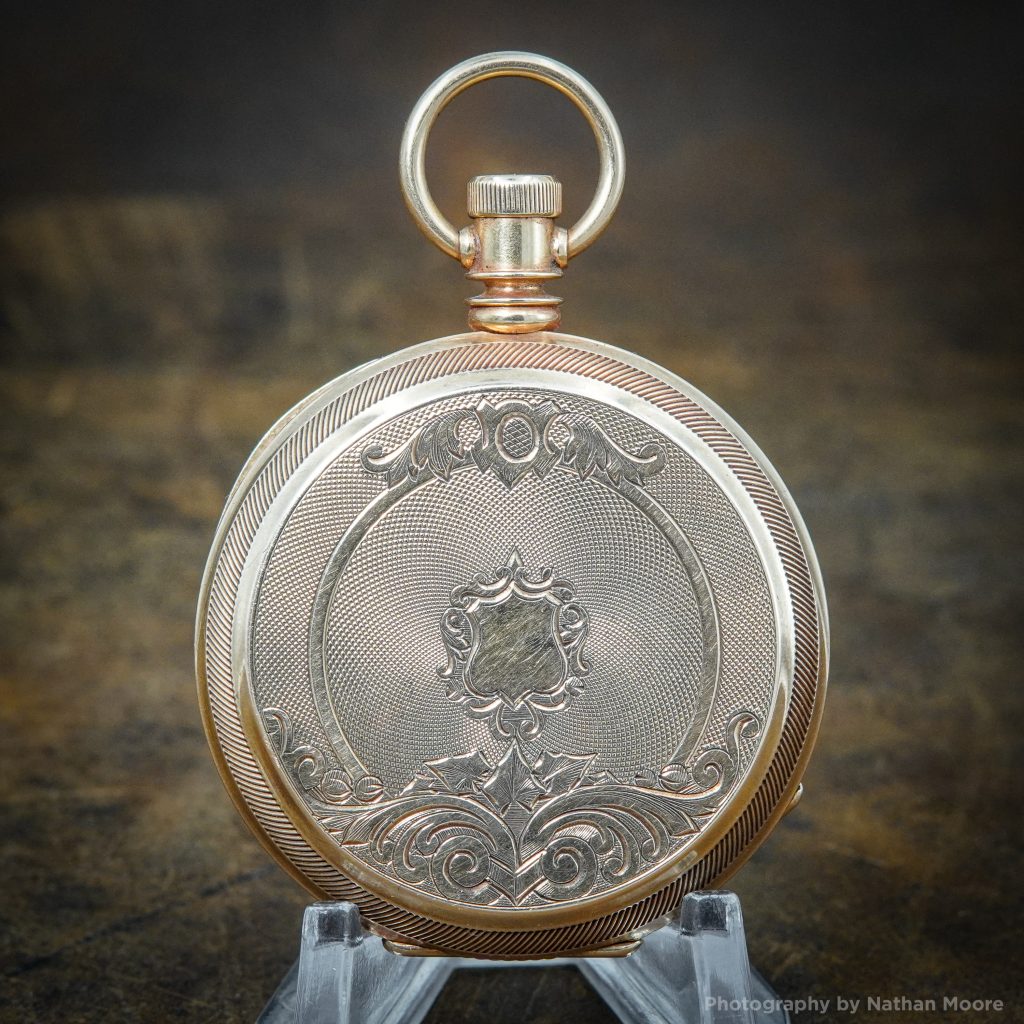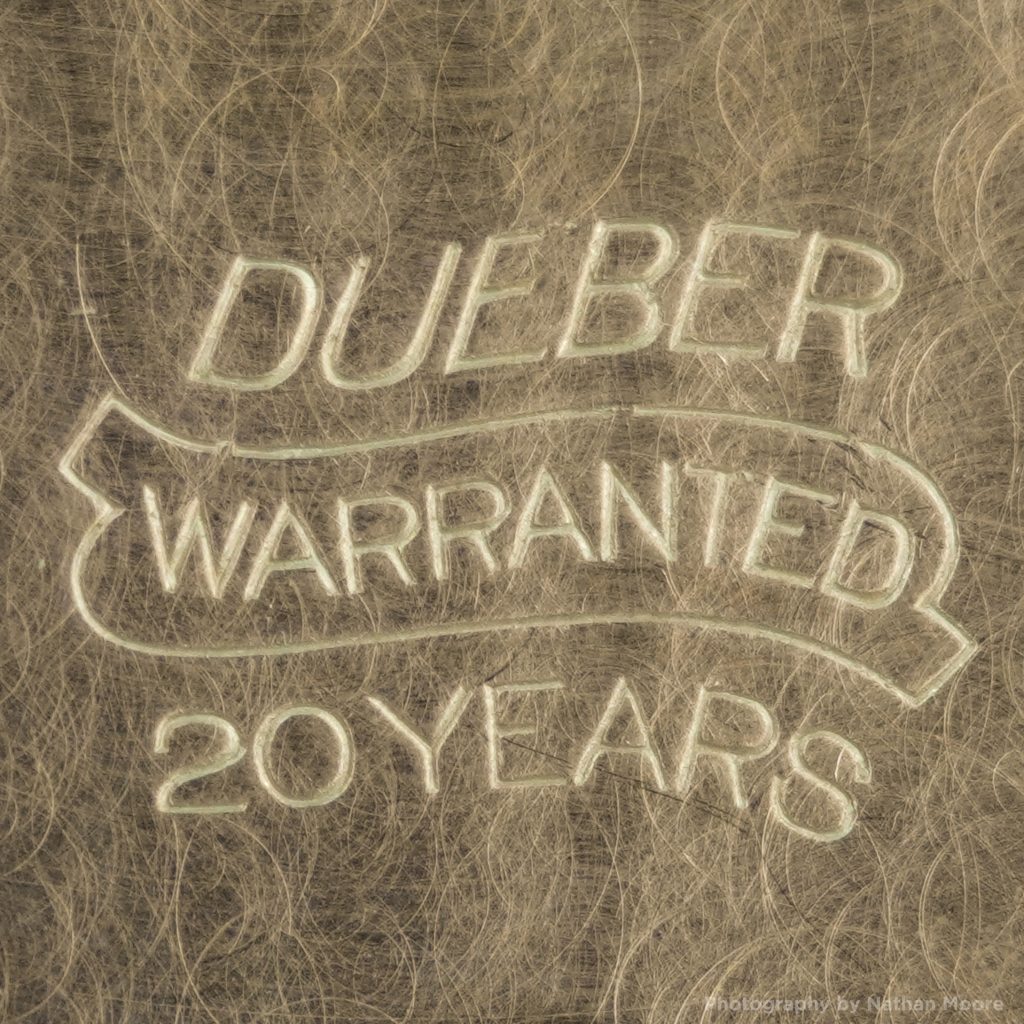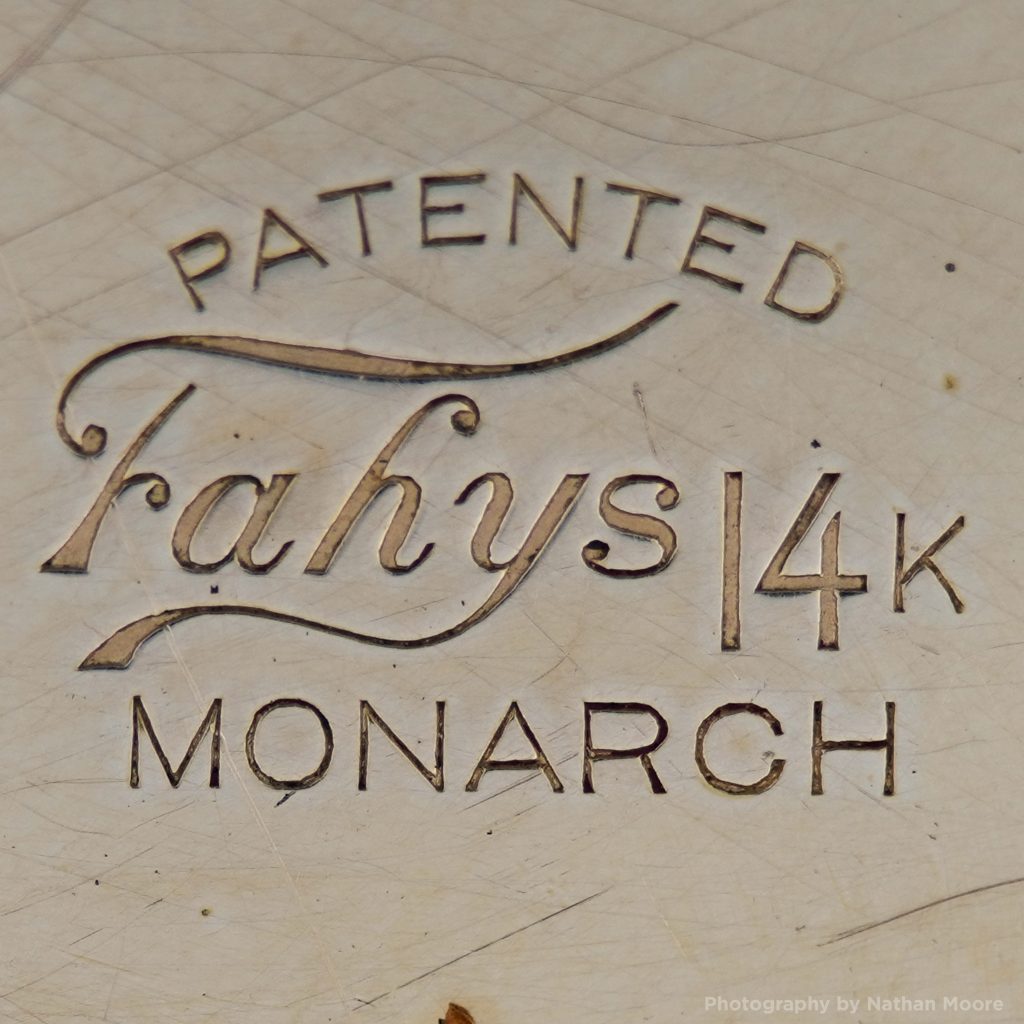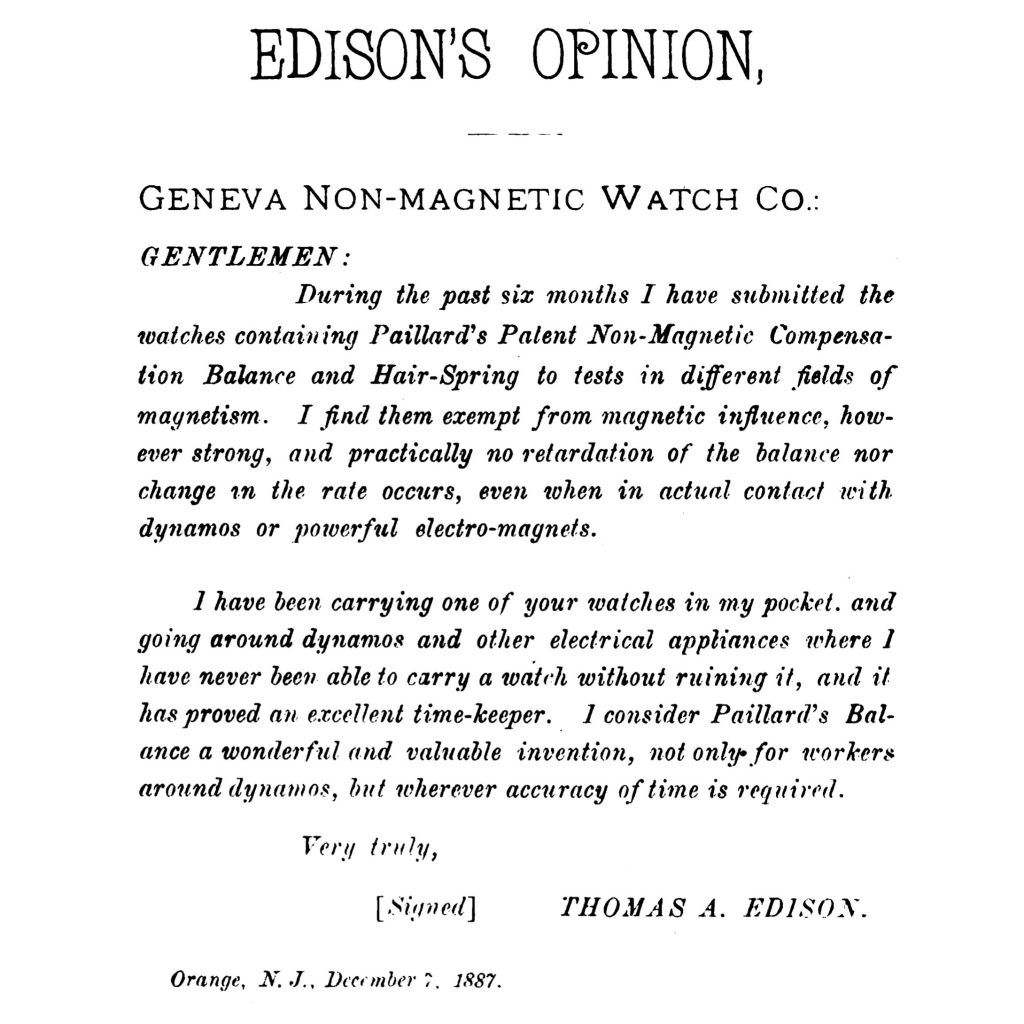Identifying Solid Gold Watch Cases: General Rules of Guidance

Being able to reliably determine whether a case is gold or gold-filled is a vital skill when purchasing antique pocket watches, especially with the various myths spread about gold and gold-filled cases. A mistake here can lead to severe financial consequences. The following “rules” can help provide guidance while evaluating watch cases. As always, exceptions exist, and some cases have been fraudulently marked – so when in doubt, please use a non-destructive test to verify the case material before purchasing an ambiguous case.
Rule 1: A year-based guarantee indicates a gold-filled, rolled gold plate, or electroplated case.
The only reason watch case companies offered year-based guarantees was to establish a credible timeline for which a customer could depend on the longevity of the case. If the outer layer of gold was worn through to the composition layer before the stated guarantee duration, the case company would exchange the case for free.
A year-based guarantee implies that the exterior material is capable of being worn through to the inner layer. Thus, such a guarantee indicates that the case is gold-filled, rolled gold plate, or electroplated material. Solid gold cases did not require such guarantees.
Rule 2: A grade name suggests a gold-filled case.
With few exceptions, watch case companies did not apply grade names to solid gold cases. If a grade name like “Monarch” is marked on the case, it indicates the case company developed a marketing name for that type of case. Solid gold cases did not receive the same treatment, as the solid gold qualities would stand on their own.
Notable exceptions are solid “double stock” cases that are comprised of two different purities of solid gold. These typically could not be marked with a singular solid gold purity due to the duality of materials. Thus, grade names like “Wheat” or “Granger” were utilized to represent these double-stock cases. This exception can sometimes trip up collectors, as these cases can sometimes initially appear to be gold-filled due to the lack of purity markings.

Image Courtesy of Jones & Horan
Rule 3: “U.S. Assay” indicates a solid gold case.
In the late 1800s, it became common for case companies to mark cases “Warranted” in association with a karat indicator and “U.S. Assay.” This combination implies the case company guaranteed that the case would assay at or above the claimed karat purity. In 1905, to prevent confusion, the United States outlawed case marks that suggested guarantees backed by the government. As a result, the “U.S. Assay” marking habit was terminated after 1905 but remains a fairly reliable designator of a solid gold case.
Useful Tests and Tips For Identifying Solid Gold Cases
Over time, collectors can develop helpful tests for evaluating the material of a watch case, when in doubt. Due to the financial risk, verifying the case material using a non-destructive test is recommended.
Test 1: The Flex Test.
One of the benefits of a gold-filled case is the added durability provided by the inner composition material. In fact, early gold-filled cases were advertised as “gold stiffened” cases.
Solid gold is a softer material and tends to flex more than gold-filled material. Gentlely applying pressure with your thumb to the back of the case and observing how much it flexes can provide insight into the case material. If the case flexes more, it is more likely to be solid gold. If the case does not flex at all or flexes very little, it is more likely gold-filled, rolled gold plate, or electroplated.
Some solid gold cases were manufactured from thicker sheets of gold, so this method tends to be more reliable for “lighter” cases.
Test 2: The Cheek Test
Solid gold adapts to temperature much faster than a filled material. As a result, holding a watch case to your cheek can provide insight into the case material. A gold case will adapt to the heat of your cheek much quicker than a filled case. The difference is subtle, so this test requires “learning” the difference by carefully comparing the temperature change of solid gold cases to filled cases. With practice, most people can develop this skill as a “sixth sense.”
Test 3: The Wear Test
This is possibly the easiest and most reliable test if the watch has seen everday use by a previous owner. An inspection for wear spots on the pendant, case back, and edges can reveal areas where the outer gold layer has worn through to the composition layer. This is typically referred to as “Brassing.” Solid gold cases will not exhibit any “brassing” on the case, so the presence of these spots indicates that the case is filled.
Test 4: The Embossed Markings Test
Because gold is a softer material than filled alternatives, solid gold cases are more likely to have embossed markings than filled cases. For this reason, cases with embossed marks, especially those that feature other traits of solid gold cases, are likely gold.
Take note that the reverse is certainly not true. A stamped case does not immediately indicate that the case is filled.
Embossed Markings: Likely solid gold
Stamped Markings: Any case material
Test 5: The Screw-back Test
Because gold is a softer material, manufacturing threaded cases from solid gold was not a practical pursuit. On the other hand, gold-filled material offered the durability required for screw-back and screw-bezel construction.
While exceptions exist, if the case features a screw-on back or bezel, it is almost certainly a gold-filled, rolled gold plate, or electroplated case. Solid gold cases were typically manufactured as jointed (hinged) cases or snap-back.
Test 6: Lookup the mark in the Pocket Watch Database Case Identifier
The Pocket Watch Database Case Identifier search engine now features over 800 markings that have been meticulously indexed to be associated with American watch case manufacturers, offering an easy way to identify case marks. Reference pages for every known case grade can provide insight into the case material and other critical characteristics. Many reference pages showcase support for the production era, associated trademark documentation, research notes, and images of known examples. Additional marks are added regularly, and these reference pages are becoming a fantastic research tool for gaining insight into the nuances of the American watch case industry.






Excellent article that clarifies what is an emotive subject by many collectors…thanks !
I learn new things every day! Thanks for a great article!
Nathan, I have a watch that had been passed down to me I think that I am 3rd or 4th generation. Trying to figure out what it is. Following your article, you said that screw down cases were ” manufacturing threaded cases from solid gold was not a practical pursuit. On the other hand, gold-filled material offered the durability required for screw-back and screw-bezel construction.
While exceptions exist, if the case features a screw-on back or bezel, it is almost certainly a gold-filled, rolled gold plate, or electroplated case. Solid gold cases were typically manufactured as jointed (hinged) cases or snap-back.”
While mine is not a screw down it is hinged? It also has a medical snake and cross on it? I am not asking for a value for it just trying to understand of “it” It has sat in a draw for many years because a Jewler put wrong crystal on it. Because you could not set it no hole.
Sounds like you have a Fahys gold-filled case. Check out this page and see if you marks are similar: https://pocketwatchdatabase.com/guide/case-companies/fahys-watch-case-co/grades/Fahys-Permanent::769